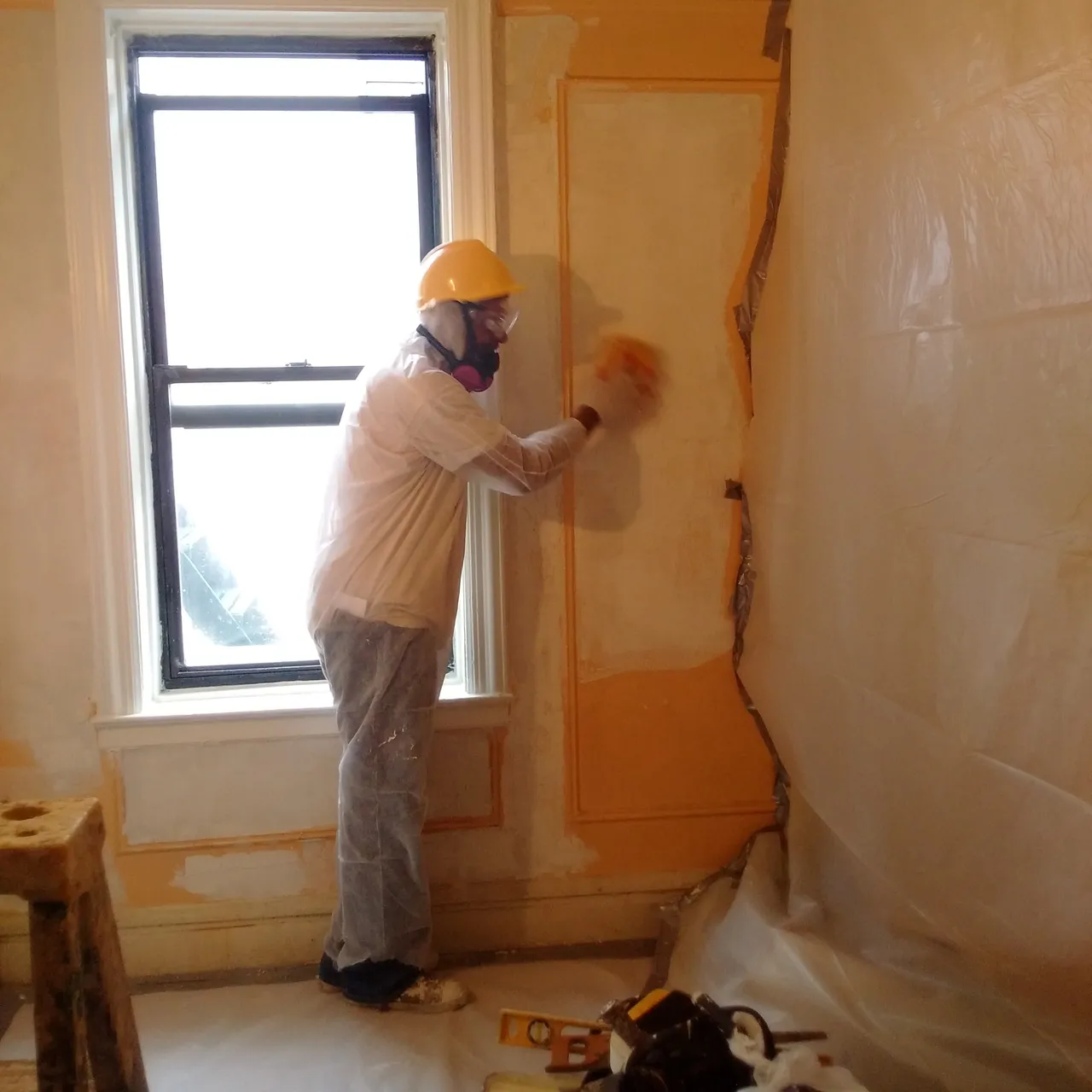Reliable DOH & HPD Lead Violation Removal in NYC-- Shield Your Property
Reliable DOH & HPD Lead Violation Removal in NYC-- Shield Your Property
Blog Article
Ideal Practices for Guaranteeing Safe and Thorough Lead Infraction Abatement
Attending to lead offense reduction needs a multi-faceted method to make certain both security and compliance. Initial evaluations making use of innovative detection approaches such as XRF analyzers set the phase for an exact understanding of contamination degrees. Incorporating proper control methods, consisting of airtight barriers and HEPA filtering, combined with using individual safety devices (PPE) for workers, forms the foundation of a safe procedure. Precise cleanup protocols, featuring HEPA vacuuming and wet-wiping, are crucial. Yet, it's the final clearance procedure, entailing detailed evaluations and laboratory screening, that genuinely verifies a lead-free environment, making certain lasting safety and security. Just how do these practices interconnect to ensure comprehensive lead abatement?

Initial Analysis
Performing a first assessment is a critical initial step in lead violation abatement. This phase incorporates a comprehensive evaluation of the residential property to recognize the presence, level, and details places of lead-based hazards. Certified experts, such as licensed lead inspectors or take the chance of assessors, must carry out an extensive site evaluation, making use of devices like X-ray fluorescence (XRF) analyzers to precisely spot and gauge lead concentrations in paint, dust, soil, and water.
The assessment should likewise include an evaluation of the structure's history, previous reports, and any issues or health and wellness problems reported by passengers - Lead Removal Contractors. Recording the findings meticulously is necessary, as these records form the basis for creating an efficient abatement technique. An extensive evaluation likewise includes tasting and lab evaluation, which are critical to confirm the presence of lead and overview subsequent actions
In addition, it is imperative to communicate the outcomes transparently to all stakeholders, consisting of home owners, renters, and regulatory authorities. By making sure that the first assessment is conducted with accuracy and roughness, specialists can lay a strong structure for a targeted and efficient lead reduction process, eventually safeguarding public wellness and making sure compliance with regulative criteria.
Correct Containment
Proper control is crucial to protect against the spread of lead pollutants during abatement activities. Properly managing containment lessens the risk of lead dust and particles moving to non-work areas, thereby guarding both the setting and individuals outside the immediate job area.

Regular examinations of the control location are necessary to look for breaches or weaknesses in the obstacle. Any type of identified issues ought to be quickly resolved to preserve the stability of the containment. By sticking to these practices, abatement jobs can successfully manage lead contamination and mitigate connected wellness dangers.
Worker Security
Ensuring worker security is vital throughout lead reduction tasks to avoid work-related exposure to unsafe lead particles. Vital steps include using individual safety equipment (PPE) such as respirators, gloves, and full-body matches especially designed to obstruct lead dust and fumes. Workers need to go through extensive training on the proper usage and upkeep of PPE, including healthy testing for respirators to guarantee maximum efficacy.
Design controls, such as regional exhaust ventilation systems, are important in lessening air-borne lead focus in the work setting. Administrative controls need to additionally be applied, including limiting the period of direct exposure and turning workers to reduce private direct exposure times. Routine clinical monitoring and organic monitoring are vital for early discovery of lead absorption, enabling prompt treatment and therapy.
Furthermore, establishing a decontamination method is important. his comment is here Employees should follow stringent purification treatments prior to breaks and at the end of their change to stop lead dust from being brought outside the workplace. This consists of complete hand and face washing with lead-specific cleaning representatives and changing out of contaminated garments.
Meticulous Clean-up
Maintaining a safe job environment extends past worker protection and encompasses careful clean-up to make certain lead particles are completely gotten rid of from the site. The process of careful cleaning is essential in preventing the recontamination of the abated location and securing both existing and future owners.
To accomplish a comprehensive cleanup, all workspace need to be methodically sanitized. This entails the use of specialized HEPA (High-Efficiency Particulate Air) hoover and wet-wiping strategies to record and get rid of great lead dirt that may have decided on surfaces. It is essential to clean all horizontal surface areas, consisting of floors, home window sills, and countertops, along with upright surface areas that might have entraped lead bits.
Workers must wear suitable individual protective equipment (PPE) during cleanup to prevent exposure to residual lead dust. Made use of cleansing products such as wipes, sponges, and wipe heads ought to be gotten rid of based on contaminated materials disposal laws.

Final Clearance
Last clearance is the vital wrapping up stage of lead reduction that establishes whether the website is risk-free for reoccupation. This vital step includes extensive assessment and testing to verify that all lead hazards have you could try here actually been effectively gotten rid of.

Last clearance testing not only secures future owners yet also ensures compliance with regional, state, and federal regulations. It offers as a recorded validation of the abatement specialist's adherence to industry ideal techniques. Ensuring a comprehensive and effective final clearance is important in protecting public health and wellness and promoting trust fund in the abatement process.
Final Thought
Making certain safe and detailed lead violation reduction demands a complex approach incorporating preliminary analyses with innovative detection approaches, effective containment techniques, stringent employee defense procedures, and careful cleaning treatments. The last clearance phase, featuring comprehensive assessments and lab screening, is essential to verify conformity with EPA criteria. Adherence to these best techniques ensures a secure atmosphere for passengers, minimizes wellness threats, and upholds governing demands, thereby promoting public wellness and safety in lead-affected areas.
Report this page